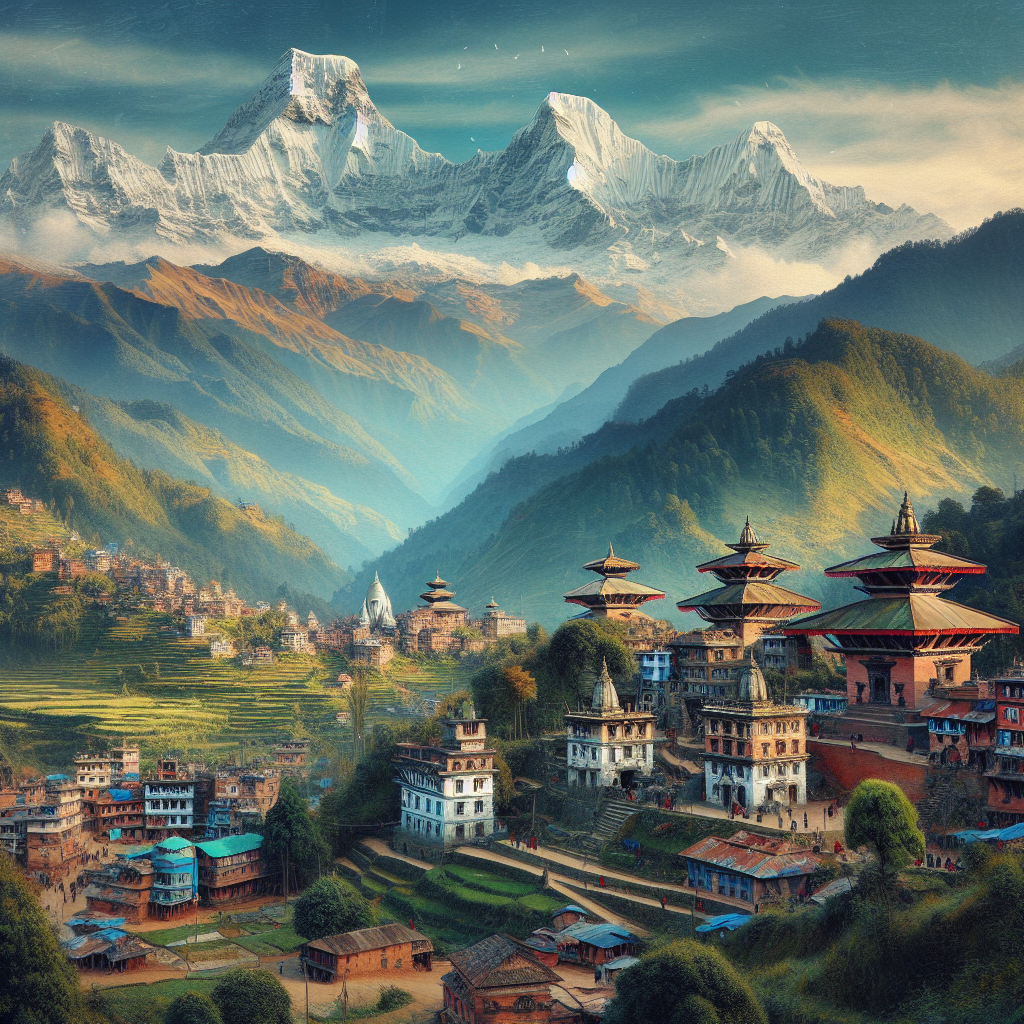10 Must-Visit Places in Nepal for the Avid Backpacker
Nepal, a country where the air is laden with adventure and the mountains call out to the souls of backpackers, offers a myriad of landscapes, cultures, and experiences. From the soaring peaks of the Himalayas to the lush jungles of the Terai, the country is a paradise for adventurers. Here are ten must-visit places in Nepal that promise an unforgettable backpacking journey.
1. Kathmandu Valley
The gateway to Nepal, Kathmandu Valley, is a treasure trove of ancient temples, palaces, and bustling streets that echo the rhythms of daily Nepali life. Backpackers can explore UNESCO World Heritage Sites like Swayambhunath (Monkey Temple), Pashupatinath, and the durbar squares of Kathmandu, Patan, and Bhaktapur. The vibrant Thamel area is perfect for budget accommodations, shopping, and planning treks.
2. Pokhara
Pokhara, the lake city, is the starting point for treks to the Annapurna region. The city itself offers spectacular views of the Annapurna range, adventure sports like paragliding, and serene boat rides on Phewa Lake. Don’t miss the World Peace Pagoda and the mysterious Davis Falls.
3. Annapurna Circuit
A classic trek in Nepal, the Annapurna Circuit, offers diverse landscapes, from lush subtropical forests to the arid high mountain deserts. The trek typically takes around 17-21 days and takes you through beautiful villages, offering insights into the local culture and unparalleled views of the Annapurna range.
4. Everest Base Camp
The ultimate trek for mountain enthusiasts, the journey to Everest Base Camp is both challenging and rewarding. Passing through the heart of the Sherpa country, this trek offers incredible views of some of the highest peaks in the world. The trail is sprinkled with monasteries, suspension bridges, and vibrant Sherpa villages.
5. Langtang Valley
Less crowded than the Everest and Annapurna regions, Langtang Valley offers a stunning trek close to Kathmandu. The trek can be completed in a week, offering beautiful views of Langtang Lirung, extensive bamboo forests, and the unique Tamang culture.
6. Chitwan National Park
For a change of pace, head to Chitwan National Park in the Terai. Here, you can experience Nepal’s wildlife by taking a jungle safari. Look out for rhinos, tigers, elephants, and a variety of birds. The park offers canoeing, guided jungle walks, and cultural shows.
7. Lumbini
The birthplace of Buddha offers a peaceful retreat. Lumbini is a UNESCO World Heritage site with monasteries built by Buddhist communities from around the world, the sacred Bodhi tree, and the Mayadevi Temple marking the exact spot of Buddha’s birth.
8. Manang
Situated in the Annapurna Circuit, Manang is a beautiful, remote village that offers a glimpse into the traditional lifestyle of the mountain people. It’s an excellent place for acclimatization and exploring the unique landscapes and culture of the Himalayan region.
9. Ghorepani and Poon Hill
For those who have limited time but still want to experience the majesty of the Himalayas, the Ghorepani Poon Hill trek is an excellent option. A 4-5 days trek, it offers spectacular mountain views, especially at sunrise from Poon Hill, and passes through beautiful rhododendron forests and Gurung villages.
10. Rara Lake
Located in the remote Mugu district of Nepal, Rara Lake is the largest lake in the country. The journey to Rara Lake is an adventure in itself, offering pristine nature, untouched by mass tourism. The lake is known for its stunning turquoise waters surrounded by pine forests and snow-capped mountains.
How to Recreate the Experience
Recreating the adventure of backpacking in Nepal involves immersing yourself in the culture, respecting the local traditions, and being prepared for the physical challenges. Here are a few tips:
– Prepare Physically: Most destinations in Nepal require a good level of fitness, especially the trekking routes. Start a fitness regime months before your trip.
– Learn Basic Nepali Phrases: Communicating with locals in their language can enhance your experience significantly.
– Travel Sustainably: Respect the environment, follow the principles of Leave No Trace, and support local businesses.
– Stay in Teahouses: Experience local hospitality by staying in family-run teahouses in the trekking regions.
– Participate in Local Festivals: If your visit coincides with festivals like Dashain, Tihar, or Losar, participate in the celebrations for a deeper cultural experience.
FAQ
Q: What is the best time to visit Nepal for backpacking?
A: The best times are during the spring (March to May) and autumn (September to November) seasons when the weather is clear and dry.
Q: Do I need a guide for trekking in Nepal?
A: While it’s possible to trek independently in some regions, hiring a guide or porter can enhance your experience and is recommended for remote or challenging treks.
Q: How do I deal with altitude sickness?
A: Acclimatize properly by taking rest days during your trek, stay hydrated, and ascend gradually. If symptoms persist, descend to a lower altitude immediately.
Q: What are the visa requirements for Nepal?
A: Most nationalities can obtain a visa on arrival. Check the latest requirements on the official website of the Department of Immigration, Nepal.
Q: Is it safe to backpack in Nepal?
A: Yes, Nepal is considered safe for backpackers. However, it’s essential to take usual travel precautions, stay informed about the weather conditions, and respect local customs.
Nepal is a land that captivates the heart with its majestic landscapes, rich culture, and the warmth of its people. Whether you’re trekking through the high Himalayas, exploring ancient temples, or experiencing the vibrant streets of Kathmandu, Nepal offers an adventure that is both enriching and exhilarating for the avid backpacker.
